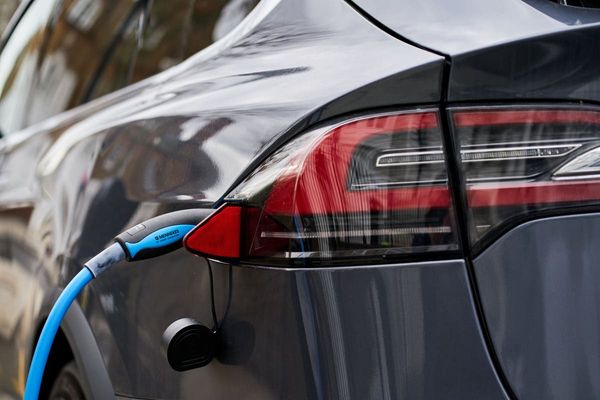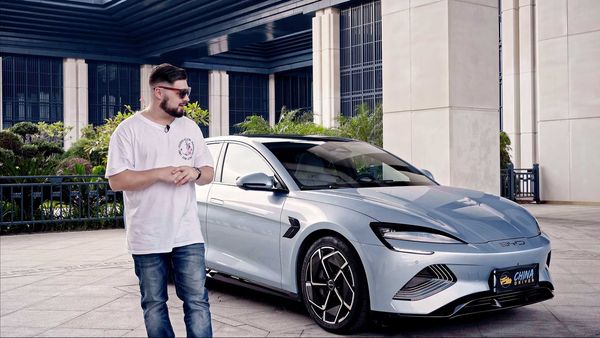
The EV world was very different this time last year when I wrote a recap of lessons from studying 5000 EVs. Ford had not yet shipped a single F-150 Lightning. Hertz had not yet ordered 100,000 Teslas or 175,000 EVs from General Motors. Gas prices in the U.S. had not yet soared above $5. Build Back Better had not yet become the Inflation Reduction Act with tax credits for both new and used electric vehicles.
A lot can change in one year.
Recurrent has just passed our second anniversary with a community of over 11,000 EV drivers in the U.S. and 100 million miles of data and insights. Here’s an update about what we continue to learn as EV adoption accelerates.
EV odometers still don’t matter
Odometer has always been a rule of thumb used to determine the value of a used car, but it simply doesn’t make sense with EVs. We see “low mileage” used electric cars with batteries that are substantially degraded, and “high mileage” cars that have been treated well and still have real-world range similar to when they were new. For instance, by limiting the depth of discharge each time you charge, you can add a lot of miles with relatively little degradation.
In April, we published research showing that manufacture date is a better indicator (but still far from accurate) of remaining battery capacity than model year in an attempt to shift the paradigm away from age and odometer as the predictors of EV value. We’ve also watched as battery replacements have rolled out across nearly all Chevy Bolts over the last year, showing an increase in range of 13% in the 1600+ Chevy Bolts in our connected community.

Used EV shoppers are getting smarter
Thanks to efforts across the community to learn and share how EVs age, used car buyers have begun to figure out that used EV values are determined by battery health, not its odometer reading. This is visible at all stages of the car buying process.
One of the largest wholesale used auto auctions in North America, ADESA, noted a $4000 - $7000 increase in sale price and a 7% to 9% increase in vehicle sales rate when shoppers had information about the EV battery.
That wholesale premium matches up with what we observed in our retail shopping research. Potential used EV buyers are willing to pay a $3000 (or higher) premium for vehicles with batteries in great condition, even if they have high mileage. Buyers were even willing to pay a premium for a used EV with a battery in “Fair” condition when compared to having no information about that battery.
EPA range estimates are confusing
While it seems natural that the agency tasked with MPG and MPGe ratings might expand to cover EV range, the range estimates provided by the EPA are notoriously unreliable. Recent Consumer Reports testing on a variety of new EVs showed that EPA range estimates are 10-70 miles off from real-world driving tests in mild and warm weather, with even bigger differences (over 100 miles, in some cases) in cold weather driving.
Our own studies from last winter, involving thousands of vehicles from our subscribers in real-world driving, showed up to 40% range loss in cold temperatures, a figure that varies substantially from model to model. In response to widespread disappointment from EV owners, automakers have started to use technology like heat pumps to help with winter range loss.
As a result of the inaccuracies in the EPA range estimates, one of our major efforts has been predictive models to determine the “Range When New” for every EV make, model, year and trim, based on data from vehicles subscribed to Recurrent. We use “Range When New” in place of the EPA range for our internal calculations since we find it represents drivers real-world experience better.

New EV models are accelerating adoption
It’s not just Tesla anymore. We started Recurrent in 2020, which was arguably Tesla’s high-water mark in terms of market share. They had 63% of all new EVs in 2020, before falling to 53% in 2021 and 48% in the first half of 2022.
Dozens of new EV models have launched in 2021 and 2022 with more planned for 2023. This year we've added a thousand connected drivers of some of the newest EV models on the road: Hyundai Ioniq 5,
Rivian R1T, Ford Mach-E and F-150 Lightning. A wider selection of vehicles and price points is bringing in new first-time EV drivers, as is a maturing used market.
The EV market analysis team at Boston Consulting Group factors in model selection as one of the major inputs to their adoption forecast. The accelerating growth that they are forecasting is at least partially reflective of all of these new models coming on the scene.
High gas prices drive people to electric vehicles
In March, when U.S. gas prices reached all-time highs, I looked to the past to predict the future. At the time, I said that EV and hybrid sales would surge as a result of historic gas prices. That’s exactly what happened:

At the time, the one thing I missed was an even bigger milestone. With the brief exception of a few months in 2018 when the Tesla Model 3 launched, EV (fully battery + plug-in hybrid) sales have never exceeded regular hybrid sales. We quietly slipped past that incredibly historical milestone, likely for good, this summer.
That shift was another notable change in BCG’s EV forecast from 2021 to 2022 – last year, they predicted a 2:1 ratio of hybrid to EV sales in the U.S. in the year 2025. In this year's forecast, the overall percent adoption of both had grown, but the ratio of hybrid to EV sales was 1:1 for the year 2025… in other words, what we’re already seeing today. So it's not too hard to make another bold prediction: that next year’s BCG 2025 forecast will have that ratio skewing even more in favor of EVs.
In all, it’s been a fascinating two years for electric cars. A lot changed, and the rate of change is only beginning. The next 12 months promise to be just as exciting.










